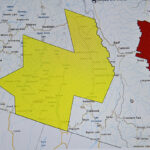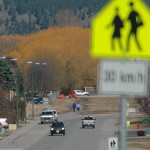Home »

Prevent CO in your home
British Columbia’s first ever Carbon Monoxide Awareness Week runs from November 1 to 7 this year, and Cranbrook Fire & Emergency Services is reminding you to prevent carbon monoxide (CO) build up in your home by properly maintaining all fuel-burning appliances and installing CO alarms in your home.
 “According to the BC Coroners Service, in the past ten years there have been almost 120 deaths due to carbon monoxide poisoning,” said Scott Driver, Acting Director of Cranbrook Fire & Emergency Services. “These deaths are entirely preventable, and we want to make sure everyone stays safe and healthy.”
“According to the BC Coroners Service, in the past ten years there have been almost 120 deaths due to carbon monoxide poisoning,” said Scott Driver, Acting Director of Cranbrook Fire & Emergency Services. “These deaths are entirely preventable, and we want to make sure everyone stays safe and healthy.”
Cranbrook Fire & Emergency Services also reminds you to install CO alarms in your home if you have a fuel- burning appliance, a fireplace or an attached garage. Fuel-burning appliances can include furnaces, hot water heaters, gas or wood fireplaces, portable fuel-burning heaters and generators, barbecues, stoves and vehicles.
“You should install a working CO alarm on every story of your home and next to each sleeping area,” said Bill Munro, Fire Prevention Coordinator with Cranbrook Fire & Emergency Services. “Make sure to test and clean your carbon monoxide alarms regularly and replace them according to manufacturer’s instructions.”
What is CO?
- CO is known as the “silent killer” because it is an invisible, tasteless and odourless gas that can be deadly. CO is NOT natural gas – natural gas has a harmless chemical called mercaptan added to it to make it smell like rotten eggs.
- CO is produced when fuels such as propane, gasoline, natural gas, heating oil or wood do not burn completely in fuel-burning appliances and devices.
- CO inhibits the blood’s capacity to carry oxygen and can cause health problems before you even notice that it’s present.
- At low levels, effects include flu-like symptoms, such as tiredness, headaches, shortness of breath and impaired motor functions.
- At high levels, or if you are exposed to low levels for long periods of time, you can experience dizziness, chest pain, poor vision and difficulty thinking.
- At very high levels, it can cause convulsions, coma and death.
Prevent CO in your home
- Ensure fuel-burning appliances, chimneys and vents are properly maintained, as well as cleaned and inspected annually. Visit www.technicalsafetybc.ca to find a licensed contractor near you.
- Check that all outside appliance vents are not blocked.
- Never use barbecues inside garages, even if the garage doors are open. Only use them outside, away from all doors, windows, vents, and other building openings.
- Portable fuel-burning generators should only be used outdoors in well-ventilated areas away from windows, doors, vents and other building openings.
- Ensure all portable fuel-burning heaters are vented properly, according to manufacturer’s instructions.
- Never use the stove or oven to heat your home.
- Open a chimney flue before using a fireplace for adequate ventilation.
- Never run a vehicle or other fuelled engine or motor inside a garage, even if the garage doors are open. Always remove a vehicle from the garage immediately after starting it.
Know the symptoms of CO
Exposure to CO can cause flu-like symptoms such as headaches, nausea, dizziness, as well as confusion, drowsiness, loss of consciousness and death.
If your CO alarm sounds, and you or other occupants are suffering from symptoms of CO poisoning, get everyone out of the home immediately. Then call 9-1-1 or your local emergency number from outside.
If your CO alarm sounds, and no one is suffering from symptoms of CO poisoning, check to see if the battery needs replacing, or the alarm has reached its “end-of-life” before calling 9-1-1.
Know the sound of your CO alarm
Your CO alarm (sample pictured above) sounds different than your smoke alarm. Test BOTH alarms monthly and make sure everyone in your home knows the difference between the two alarm sounds.
Don’t be confused by the sound of your CO alarm’s low-battery warning. Follow the manufacturer’s instructions so you know the difference between the low-battery warning, the “end-of-life” warning, and the alarm alerting you to the presence of CO in your home.
Additional Resources:
CO Safety: www.COsafety.tips
Fortis BC: www.fortisbc.com
City of Cranbrook







